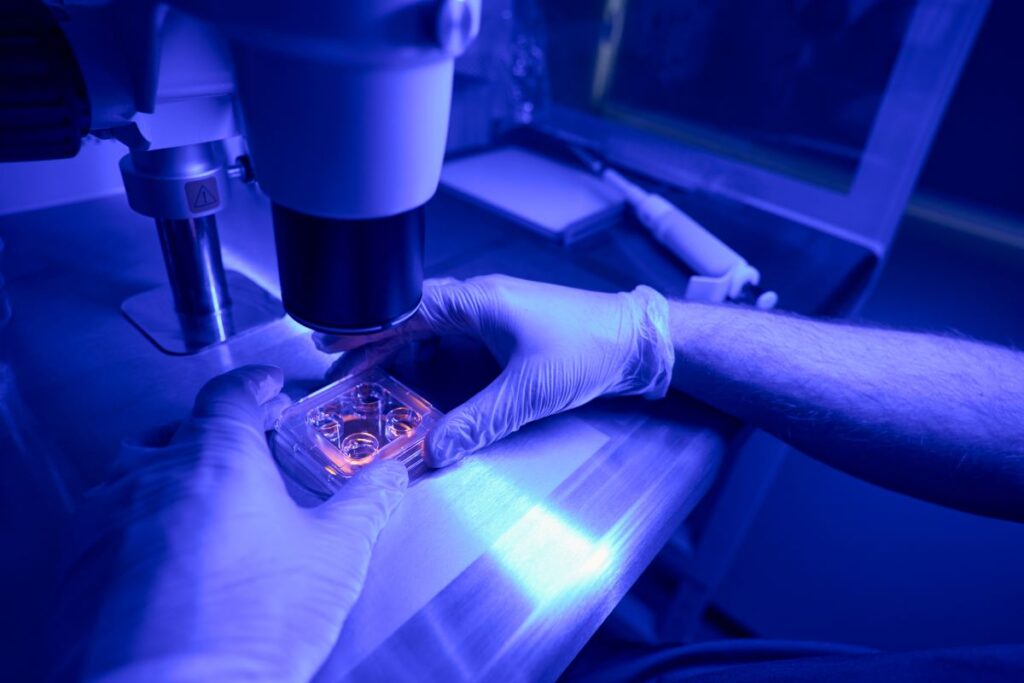The development of CAR-T cells is one of the major advances in medicine in recent years and has brought numerous benefits to the treatment of cancer patients. CAR-T cells (Chimeric Antigen Receptor T-Cells) are known for being genetically modified T lymphocytes that express chimeric receptors capable of recognizing specific antigens on tumor cells. To ensure the safety and efficacy of these lab-modified cells, one of the main steps in the process is to identify the phenotypic profile of CAR-T cells.
Phenotyping is the process of identifying and analyzing the main characteristics of these cells. In other words, phenotyping involves evaluating the cell by recording its physical, behavioral, and physiological characteristics. This is a fundamental step to ensure the effectiveness and safety of the therapy.
Techniques used
There are different types of CAR-T cell phenotyping and various applications. Some techniques, such as flow cytometry and fluorescent microscopy, allow for the assessment of whether T cells are adequately expressing CAR (chimeric antigen receptor) receptors, in addition to other markers that indicate their activation and function.
Other phenotyping techniques aim to identify the percentage of live cells and their proliferative capacity, such as MTT assays or CellTrace and CFSE assays, as well as to verify whether the cell culture is contaminated with other cell types, such as PCR techniques.
Another important step in the phenotyping process involves assessing the ability of CAR-T cells to recognize and eliminate tumor cells, as well as their ability to produce cytokines through cytotoxicity assays followed by cytokine measurement assays.
Important points in the process
One of the key points is monitoring the production of CAR-T cells. During the production process of these lab-modified cells, phenotyping allows for the tracking of T cell development and the identification of potential issues. One problem that can be detected during this process is that phenotyping may help recognize biomarkers that can predict the patient’s response to treatment. This step plays a crucial role in supporting the personalization of therapy.
Phenotyping also ensures that CAR-T cells produced in the laboratory meet established quality criteria, guaranteeing the safety and efficacy of the therapy for cancer patients. Therefore, it can be concluded that phenotyping is essential for the development of new generations of CAR-T cells with greater efficacy and lower toxicity.
Some techniques used in CAR-T cell phenotyping
According to some published scientific articles, the techniques used in phenotyping are diverse. For example, flow cytometry allows for the analysis of many individual cells, ensuring the simultaneous evaluation of multiple markers. There is also fluorescence microscopy, which enables scientists to visualize specific markers on CAR-T cells, aiding in the understanding of their mechanisms of action.
Another technique involves real-time PCR, which helps quantify the expression of specific genes in CAR-T cells. Additionally, next-generation sequencing of CAR-T cells performs an analysis of the genome of CAR-T cells, identifying possible mutations that may affect their function.
Conclusion
In conclusion, phenotyping is a fundamental step in the production and application of CAR-T cells. This process is also a way to certify the quality and safety of this therapy that is revolutionizing cancer treatment.
Researchers expect phenotyping to continue evolving and, soon, play an even more important role in the development of personalized cell therapies. With more effective and safer treatments, cancer approaches will become more assertive and have fewer side effects for the patient.


